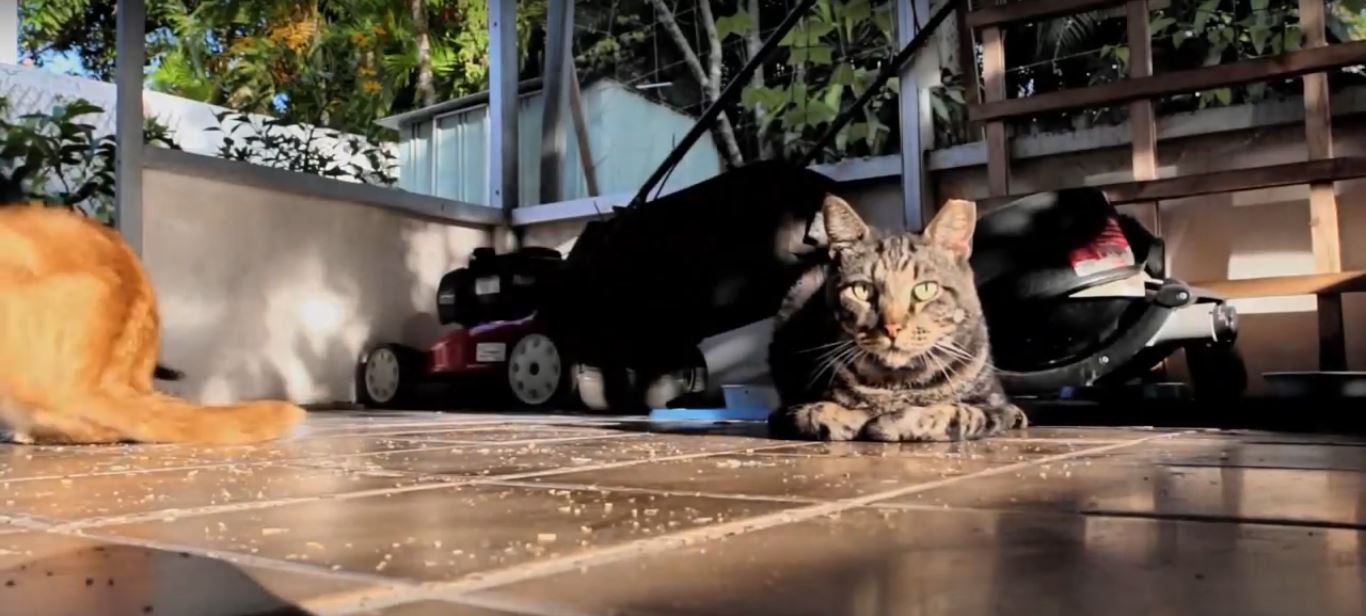- Nassau County Educational Article of the Month - What Does Stray Cat Feces Look Like and Where is it Found?
What Does Stray Cat Feces Look Like and Where is it Found?
A stray Nassau County cat can be either a lost cat or a feral cat. They are of the same species and are all domestic cats. The difference
between a feral cat and a lost cat is that lost cats are used to human beings. They tend to be more friendly and calm around
people. A lost cat can easily approach a person’s front door unlike the feral cats who will simply prefer to stay away from
any form of relationship with the humans. A feral New York cat lives outside the house, is used to the company of other cats, and can
be very unfriendly to humans.

• What does a stray cat feces look like?
The feces of a stray New York cat is mostly brown in color. It is a bit moist, sticky, formed, and smells bad but not overly. Cats
generally seem to detest their feces, and most of them tend to bury their feces after excretion.
• Where can stray Nassau County cat poop be found?
Stray cat feces are mostly found outside the house seeing that they are stray. Their feces could be found in a number of places
like a yard, under a shrub, in the garden, and occasionally inside the house.
• Health risks associated with stray New York cats and stray cat feces.
Knowing the health risks associated with stray cats gives one a foresight on how to handle stray cats and stray cat feces. Some of
the diseases caused by stray cats and stray cat feces include:
1) Toxoplasmosis: This is an infection transmitted by ingesting the toxoplasmosis disease causing germ. Study
shows that Nassau County cats that eat raw foods (like stray cats) are more likely to have toxoplasmosis than cats do not eat raw food (like
pet cats); but it is best to handle all cat feces with extreme care to avoid unforeseen ill health conditions likely to be caused
by cat feces. Study also shows that pregnant women are a high risk of contracting toxoplasmosis, and also that a person with a
healthy immune system can stand toxoplasmosis. Toxoplasmosis can also affect the memory and give other cognitive functions in
people who are not necessarily ill.
2) Escherichia Coli: This is a bacterium also known as E. Coli. It lives in human and animal intestinal tracts.
It is contracted by ingestion of New York cat feces, and its symptoms include diarrhea and abdominal cramps.
• Rehoming a stray cat
After you are certain that you are dealing with a lost cat and not a feral Nassau County cat, it will be nice to make efforts to find a home for the
cat. You can do that by:
1) Asking around in search of the owner or having the cat scanned by a vet for a microchip
2) Taking the cat to a local charity animal organization or to the pet control people.
But in a case where the cat is not a pet cat but a feral New York cat, you can decide to get rid of the cat by doing the following:
1) Do not feed the cat
2) Get a dog
3) Trap the cat
4) Call animal control if there are a lot of Nassau County cats in your neighborhood.
• Getting rid of a stray cat feces
Here are a few tips to help in the removal of a stray Nassau County cat feces:
1) Take precautionary measures; wear gloves, masks, tyvek suits, and boot.
2) Scoop the feces into a trash bag and dispose properly.
3) Properly disinfect/sanitize the affected environment.
To learn more about our services, visit the Nassau County wildlife removal home page.

